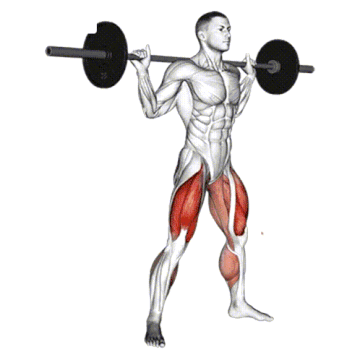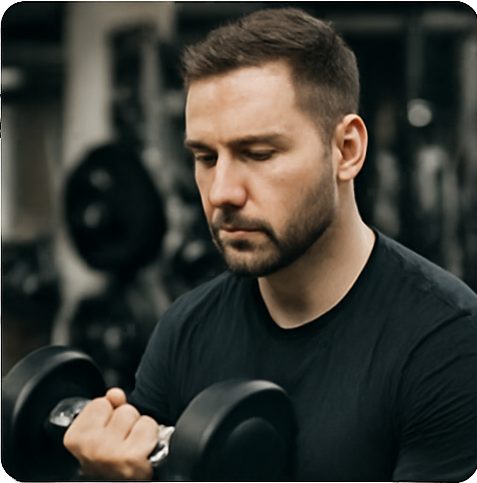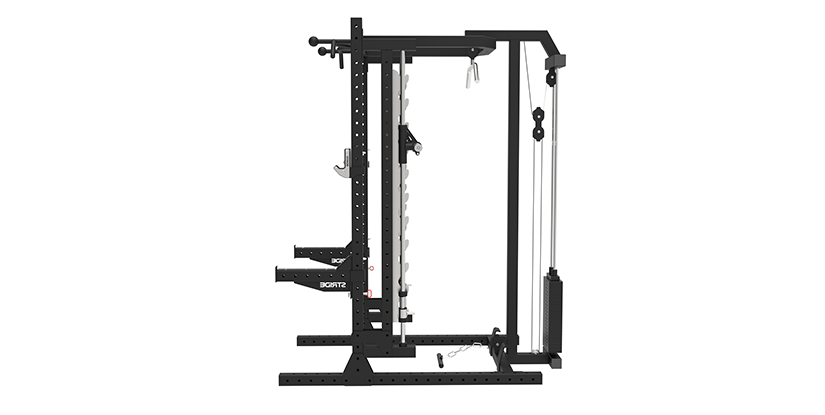When I first heard someone mention a stand on weight squat, I was confused. Like, aren’t your feet supposed to stay flat on the ground? But then I kept seeing experienced lifters at the gym doing it—heels on plates, squatting deep, smooth form. So eventually, I gave it a go. And honestly? It felt way better than I expected. Turns out, there’s a real reason people do it.
Why People Do It and What I Got Out of It
At first, I figured squatting on plates was just a weird trend. But the more I watched, the more I noticed it wasn’t just beginners doing it. Turns out, standing on plates—aka the stand on weight squat—has a real purpose. It helps lifters who struggle with ankle mobility or can’t hit depth without their heels lifting. It’s also a solid way to shift focus to your quads and clean up your form. So, I tried it—and here’s what I felt right away:
- Deeper squats – My depth improved instantly. No more heel pop.
- Cleaner form – My chest stayed up. Way less lean forward.
- Quad engagement – It torched my thighs, in a good way.
- Ankle stretch – The longer I did it, the looser my ankles felt.
- More control – I stopped falling forward on heavy reps.
Honestly, it’s kinda like training wheels for your squat. Some folks use it to fix issues short-term. Others just keep it in their program long-term—because it works.

How I Got It Right Without Wiping Out
When I first tried standing on plates, I figured I’d just wing it. Bad idea. Thankfully, one of the coaches at the gym tossed me a few golden tips—and man, they actually changed the game big time. So if you’re gonna try the stand on weight squat, here’s what actually worked for me:
1. Pick the Right Plate
I grabbed a couple of flat 10 lb rubber plates. They stayed put and gave just the right boost. Anything rounded or slippery? Big nope. You don’t wanna risk rolling your ankle mid-rep.
2. Lock the Setup In
I made sure my heels were fully on the plates—no hanging off the edge. The plates sat flush on the floor and didn’t budge. If they slide, you’re gonna have a bad time.
3. Dial In the Form
I kept my knees pushing out over my toes and stayed tight through my core. Chest up, no collapsing forward. I also slowed down the descent—no dropping fast and hoping for the best.
4. Shoe Choice = Game Changer
At first, I was lifting in beat-up trainers. Not ideal. Plates helped level things out, but switching to lifters later? That was a game changer. So yeah, if you’re serious about squats, definitely think about proper footwear.
Overall, it didn’t take long to feel the difference—just gotta get the little details right.
Don’t Skip This Stuff
I’ll be real—standing on plates helped my squat a ton. But it’s not magic. Basically, if you skip the basics, you’re just cruisin’ for an injury—ain’t worth it, trust me.
Safety First
Don’t toss a bunch of weight on the bar your first time. I started light, just to get a feel for the balance. If the plates wobble or your stance feels sketchy, stop. Reset. Better safe than faceplanted.
Listen to Your Body
At first, it felt weird. Then better. If it cleans up your form or lets you squat deeper without pain? Awesome. But if something feels off or forced? No shame in skipping it. Not everything works for everybody.
Mobility Still Matters
Elevating your heels can make things easier—but it’s not a free pass to ignore ankle or hip tightness. I started adding some daily stretching and mobility work. Eventually, I didn’t even need the plates anymore (well, unless I was in squishy shoes).
Bottom line? Use the tool, but don’t rely on it forever.If you lift in a commercial gym and struggle with squat depth or balance, the stand on weight squat might just be your cheat code—just use it wisely.
FAQs about Stand on Weight Squat
Standing on a weight while squatting elevates the heels, which alters the mechanics of the squat for specific benefits. This adjustment reduces the demand on ankle mobility, allowing for a deeper squat. It also shifts the emphasis toward the quadriceps, making the exercise more effective for targeting this muscle group. Additionally, it encourages an upright posture, minimizing strain on the lower back and promoting proper spinal alignment.
This variation is particularly beneficial for individuals with limited ankle dorsiflexion or tight calves, as it compensates for flexibility limitations. For those training in commercial gym settings, using this technique can improve overall squat depth and form. It also provides an accessible option for athletes or beginners looking to refine their squatting technique while minimizing joint stress.
Yes, standing squats are excellent for improving lower body strength, balance, and posture. They engage multiple muscle groups, including the glutes, quadriceps, hamstrings, and core. Standing squats are highly adaptable and can be performed with bodyweight, dumbbells, or a barbell for added intensity.
Incorporating standing squats into a workout routine helps enhance functional fitness by mimicking movements used in daily activities. They also improve joint flexibility and stability, which can reduce the risk of injury. For commercial gym users, this versatile exercise is suitable for individuals of all fitness levels, offering modifications to increase or decrease difficulty.
Standing squats are particularly effective when combined with techniques like the stand on weight squat to optimize muscle activation. By focusing on proper form and progression, standing squats can significantly contribute to overall strength and conditioning.
Squat stands are a valuable piece of equipment for strength training, offering stability and versatility for various exercises. They are compact and space-efficient, making them ideal for commercial gym setups where maximizing space is essential. Squat stands provide adjustable height settings, allowing users to customize them for different exercises such as squats, bench presses, and overhead lifts.
The primary advantage of squat stands is their affordability and adaptability compared to larger equipment like squat cages. They are suitable for beginners and advanced lifters, providing support for progressive overload and safety during heavy lifts. However, it’s essential to ensure they are placed on a stable surface and are rated for the intended weight capacity.
At Leadman Fitness, we recommend squat stands as an excellent investment for gyms seeking reliable and durable equipment for strength training. Their ability to accommodate diverse training needs makes them a preferred choice for both trainers and users.
Kickstand squats primarily target the glutes, quadriceps, and hamstrings while also engaging the core for stability. This unilateral exercise places greater emphasis on one leg, making it effective for correcting imbalances and enhancing coordination. By keeping one foot slightly behind as a “kickstand,” the exercise reduces pressure on the back leg, isolating the working leg for more focused muscle engagement.
Kickstand squats are particularly beneficial for improving balance and strength in the lower body. They are often used in rehabilitation programs or as part of strength training routines to address asymmetries between legs. For commercial gym users, they offer a low-impact alternative to traditional squats, making them suitable for individuals with joint sensitivities.
Incorporating kickstand squats alongside stand on weight squats can create a well-rounded lower body workout. These exercises complement each other by targeting similar muscle groups while providing variation to prevent plateaus. Always focus on form and controlled movement for the best results.

Hi, I’m the editor here at Leadman Fitness. We’re a manufacturer focused on producing top-quality barbells, plates, kettlebells, dumbbells, and strength training gear. I’ve been into sports and fitness for years, and I know my way around all kinds of gym equipment—both from using it and helping create it.
I spend a lot of time understanding the real problems people run into in the gym—whether it’s beginners trying to pick the right gear or experienced lifters looking for something more durable. I stay in close touch with our production team and talk directly with other equipment makers, so we’re always improving based on what real lifters and coaches are looking for.
What I share comes from hands-on experience—stuff that actually helps people train better, not just in theory, but in real gyms.
